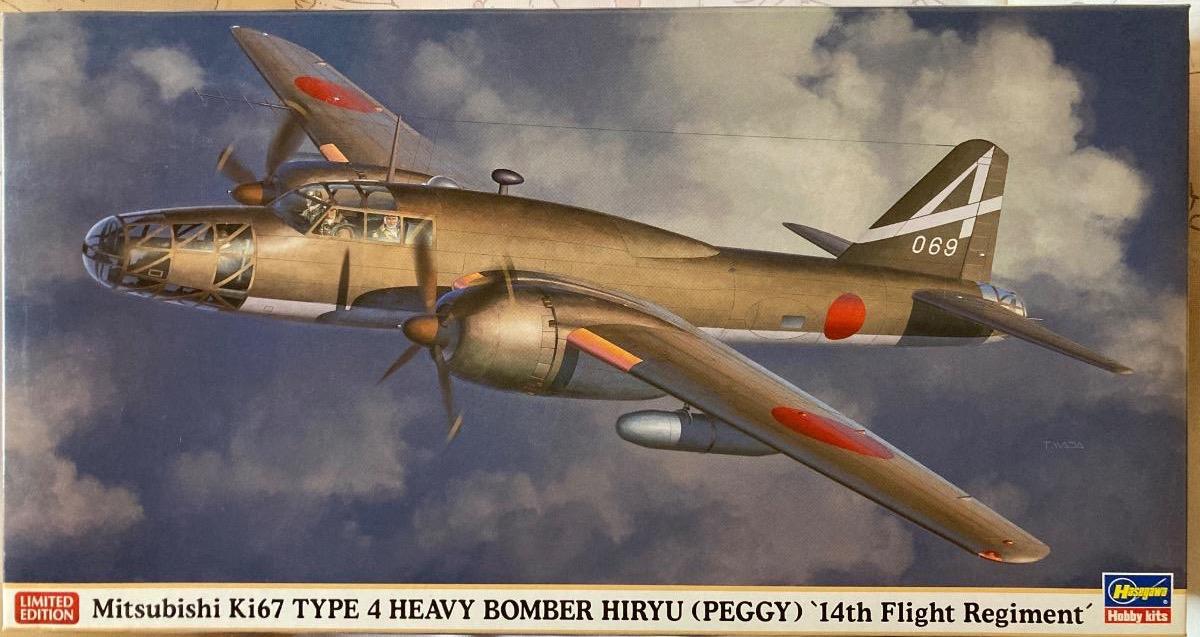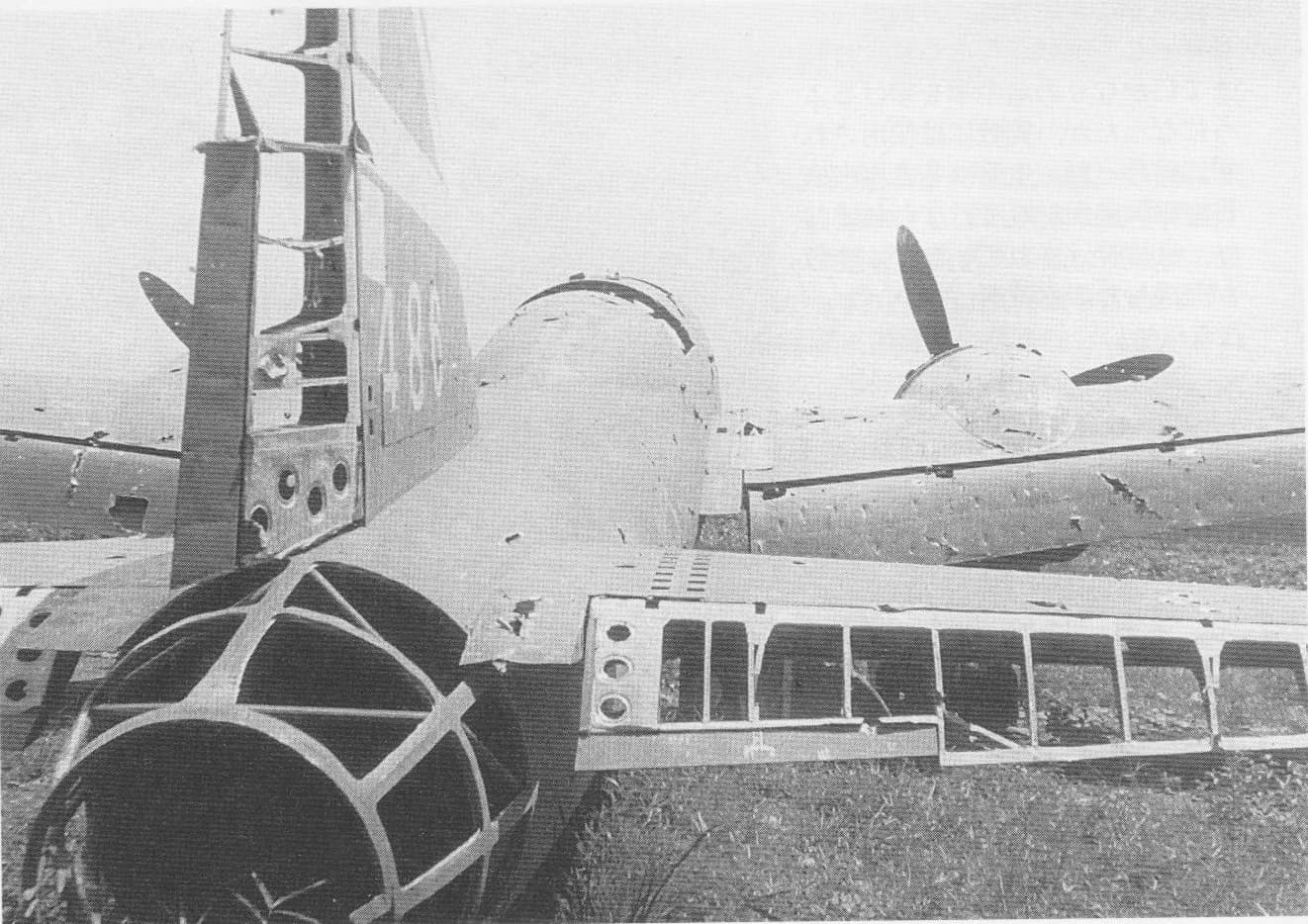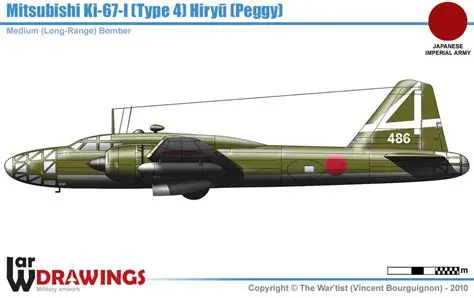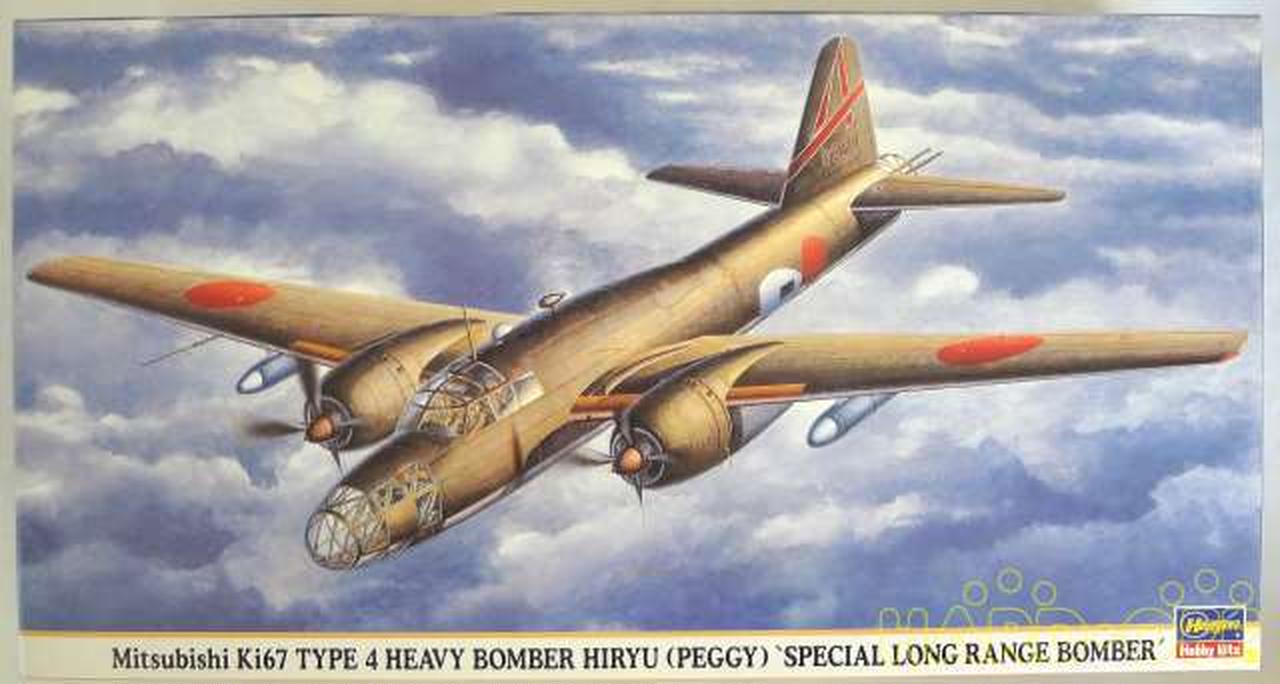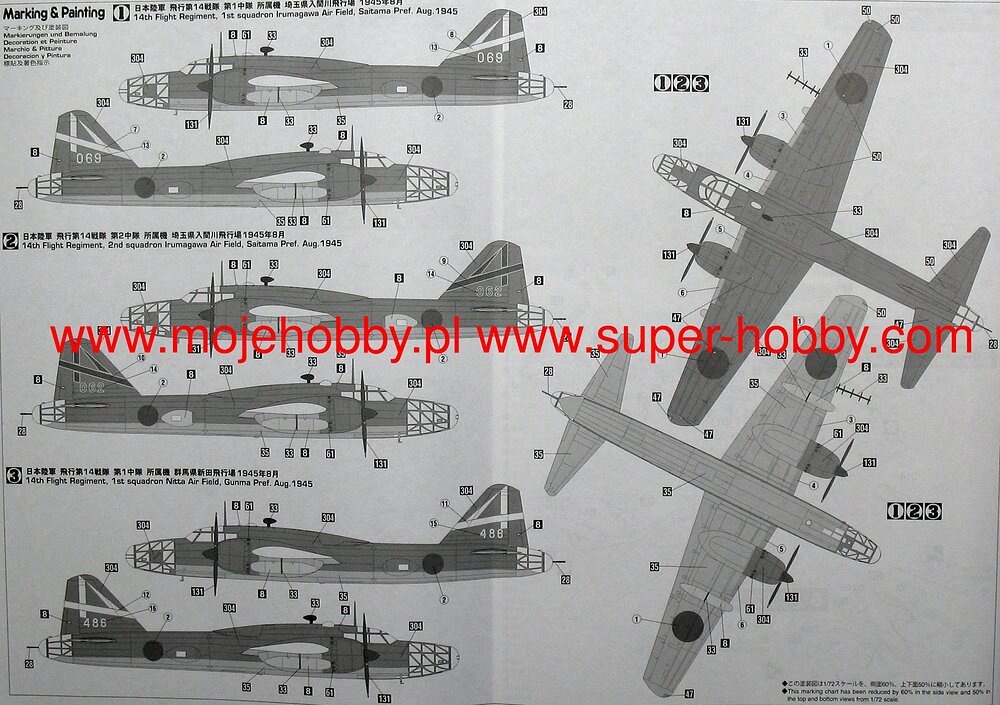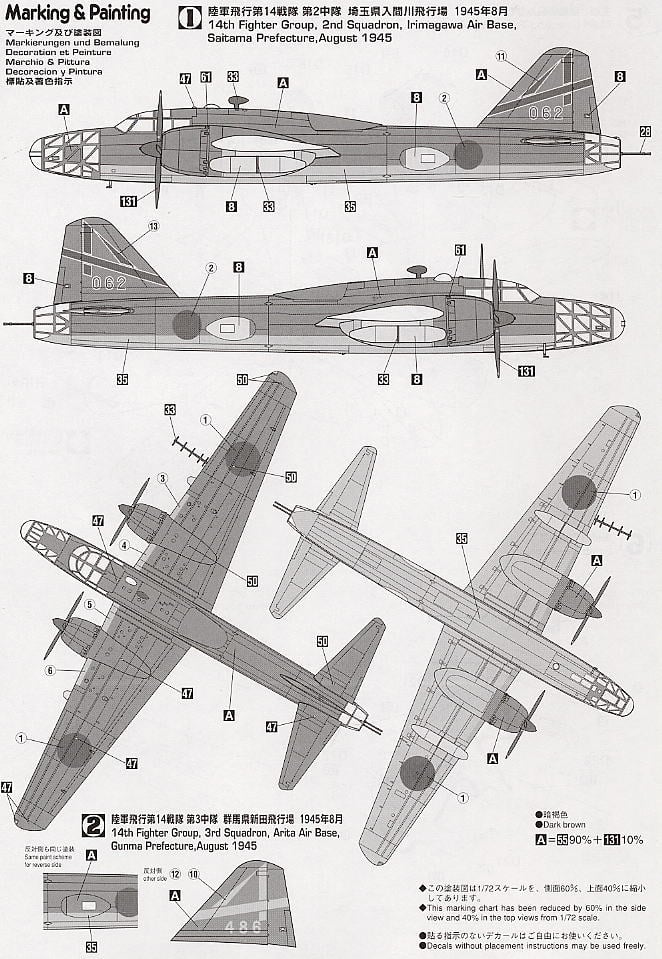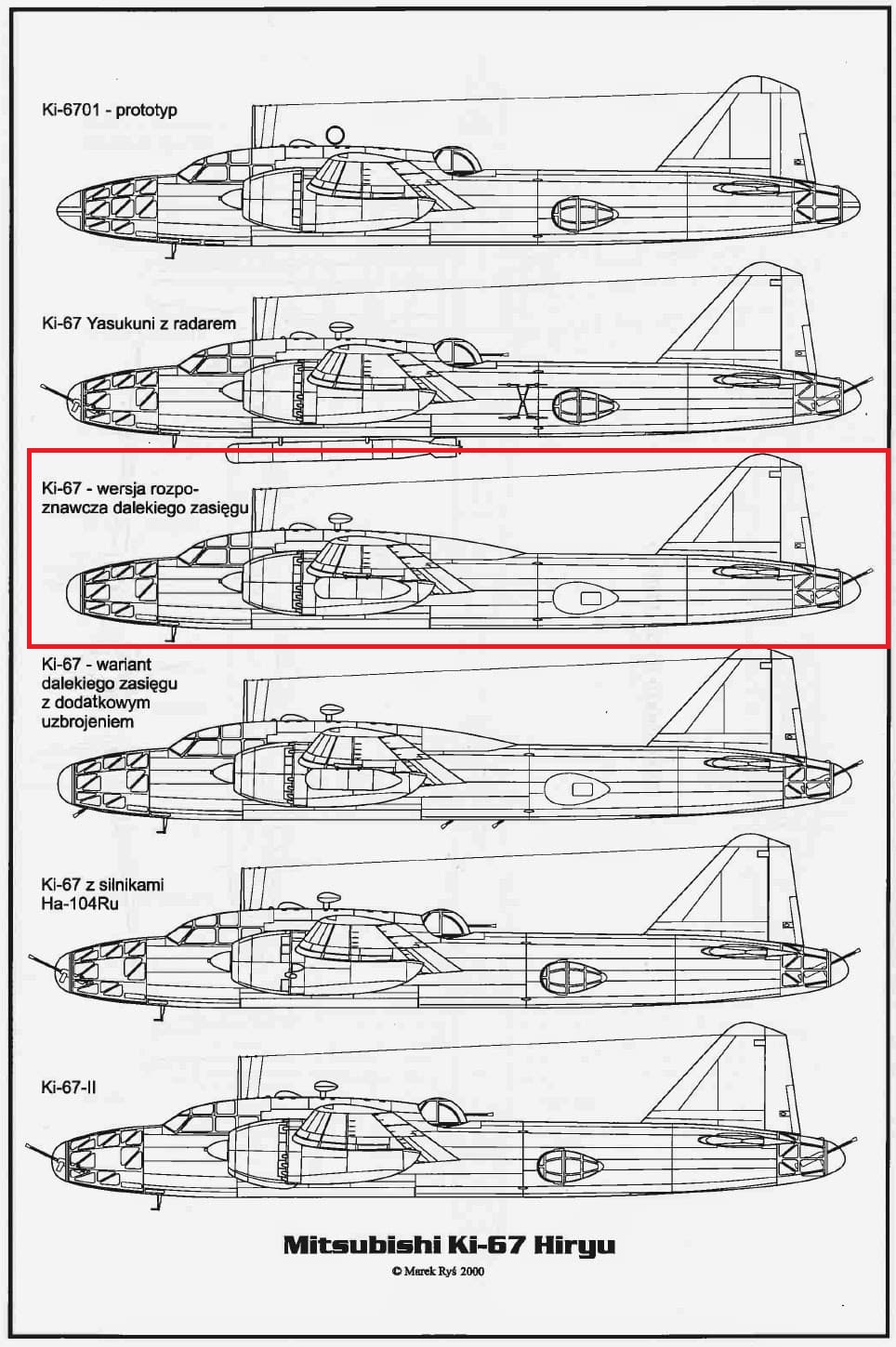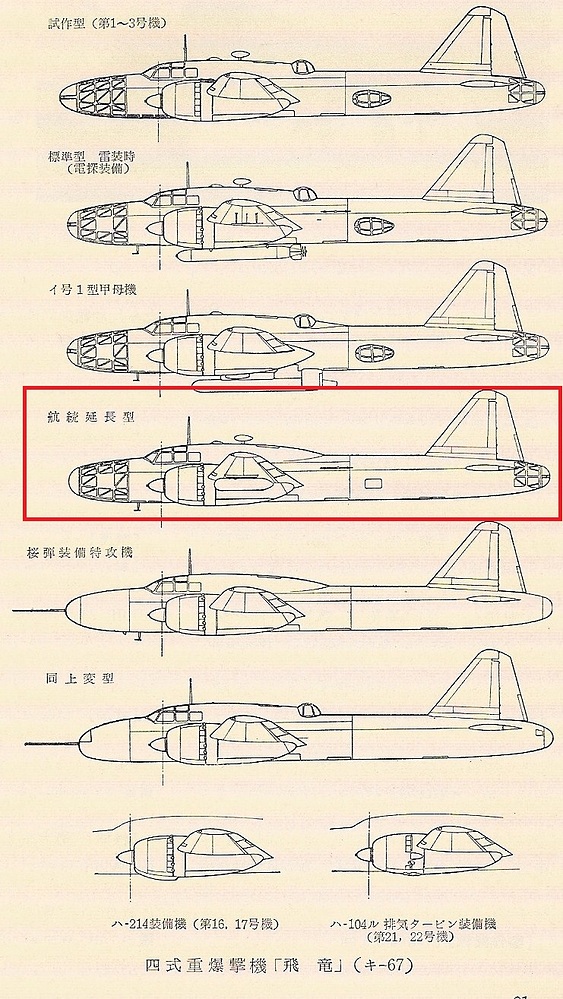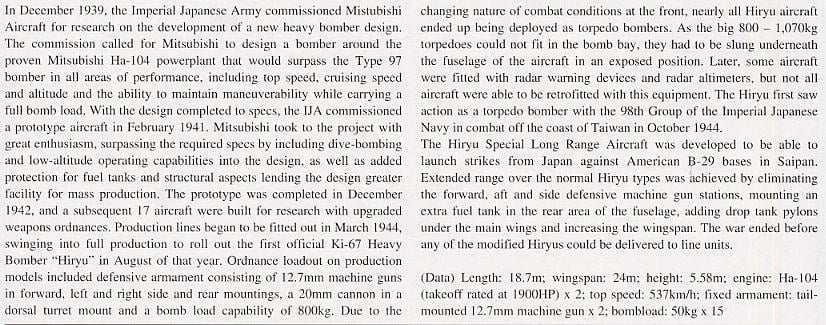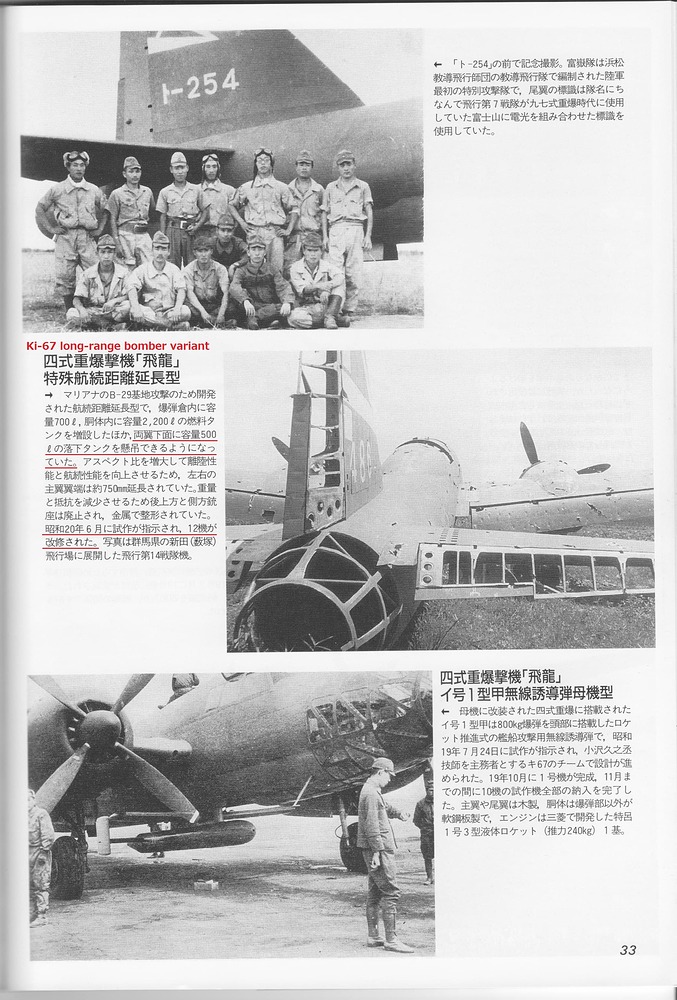- Yes
- No
Mitsubishi Ki-67 Special long-range version (四式重爆撃機 特殊航続距離延長機)
The Mitsubishi Ki-67 special long-range version is a special version of the Ki-67 bomber that was created in 1945. This aircraft was specifically designed to attack American B-29 bomber bases in the Marianas. A total of 12 aircraft of this version were produced, which served in the 14th Hikō Sentai. By the end of the war, at least one Ki-67 special long-range version definitely survived.
History
Shortly after the campaign in the Marianas ended (the fighting ended on August 10), American air and naval forces began construction of six airfields for B-29 bombers there. The first B-29 squadron to arrive in the Marianas was the XXI Bomber Command, part of the Twentieth Air Force, which arrived in the Marianas on October 12, 1944. On October 24, the Americans carried out their first bombing raid on Japan from the Marianas (bombing the outskirts of Tokyo), which infuriated the Japanese Army and Navy, prompting them to immediately initiate retaliatory actions. The Japanese Army decided that the 110th Hikō Sentai, which was part of the 170th Bomb Group and was equipped with Ki-67 bombers, should begin bombarding the airfields in the Marianas. The planes of the 110th Hikō Sentai took off from Hamamatsu airfield, striking at night or in the evening at the airfield on Saipan, and then returned to Japan, landing on Iwo Jima along the way to refuel. The Japanese army recognized that this effort was worthwhile for many reasons. Firstly, it positively affected morale and had a propaganda aspect. However, more importantly, it destroyed B-29 bombers on the ground, damaged airfields and logistical support, and continuous air raid alarms led to fatigue among the aircrews. However, on February 16, the battle for Iwo Jima began, during which the 110th Hikō Sentai conducted night attacks on the Americans on February 18 and 22 to support the defenders. However, on March 26, the fighting ended in victory for the USA, which meant that no Japanese army bomber could reach the Marianas and return home (all army aircraft had too short a range; only Mitsubishi G4M navy bombers could conduct air raids). The Japanese army hoped to use Tachikawa Ki-74 bombers for an attack on the Marianas, but they were very complicated aircraft to produce and were not ready for combat (the first air raid using the Ki-74 was planned for September 1, 1945). Since the Ki-74 was not yet ready for operational use, in June 1945 the Japanese army commissioned Dai-Ichi Rikugun Kokusho (1st Aviation Technical Arsenal) in Tachikawa to create a special version of the long-range bomber Ki-67. There was pressure to have an operational range of 2500-2600 km, even at the cost of the bomb payload. Major Sakamoto from the Experimental Aviation Division in Fussa was responsible for the design of the new variant of the Ki-67. The new variant of the aircraft underwent significant changes in its internal structure, which included the elimination of the upper and side gunner positions and a reduction of the crew to 5 people, the installation of a 700-liter fuel tank in the bomb bay, installation of combined fuel tanks in the fuselage with a capacity of 2200 liters, extension of the wings by 750 mm each, and the addition of mounts for 500-liter fuel tanks under the wings. Additionally, a new fuel system was installed and the oil reserve for the engines was increased. The aircraft also received a modern Taki-1 model 2 radar and a Taki-13 radio altimeter along with rich navigational equipment. The prototype of the first Ki-67 in the long-range version was created in July 1945 and was quickly tested. At the same time, an additional 11 Ki-67 aircraft were produced in a special long-range version, which were assigned to the 14th Hikō Sentai stationed in Chiayi, Taiwan. From there, the Ki-67 aircraft could attack American bases in the Marianas. The Ki-67 bombers of a special long-range version, taking off from the airport in Chiayi, had to cover over 2800 km to reach Saipan, flying just above the water to avoid detection by American radar (the low-flying capability was supported by Taki-13 radio altimeters). Immediately before sunset, they struck airfields with cluster bombs Ta-Dan or incendiary bombs weighing about 50 kg. After the attack, the bombers quickly returned to Taiwan, using the element of surprise and darkness to safely return to base. It is not precisely known how many combat flights the special long-range Ki-67 performed, but by the end of the war, at least one bomber of this version certainly survived (photographic confirmation). Based on the Ki-67 special long-range version, at the end of July, work began on the Ki-67 special assault long-range version armed with four fixed Ho-5 cannons angled 30 degrees downward on the belly and mounted Ho-5 cannons in the nose and tail for attacking parked B-29s. This version of the aircraft was 60% ready by the end of the war (probably a suggestion about it in the future).
Construction description
The Mitsubishi Ki-67 special long-range version is based on the Mitsubishi Ki-67-I Ko but differs significantly from it. Here, I will try to describe the modifications that appeared in this version.
- The upper fin and the side strakes have been removed (the hull has been modified in the same way as in the Ki-109)
- Unnecessary scaffolding (from the positions of the removed shooters) has been removed.
- The crew has been reduced to 5 people.
- Several connected fuel tanks with a capacity of 2200L were installed in the hull.
- A fuel tank with a capacity of 700L has been installed in the bomb chamber.
- Extend the wingtips by 750 mm each
- Under the wings, mounts have been added for two additional fuel tanks, each with a capacity of 500 liters.
- The aircraft was equipped with an airborne radar TaKi-1 Model 2 (the same as in the Ki-67-I Otsu).
- The aircraft was equipped with a Taki-13 radio altimeter and additional navigation equipment.
- The tail gunner was equipped with a dual Ho-103 machine gun (just like in the Ki-67-I Otsu)
- The weight of the aircraft has increased to 15000 kg, and the amount of fuel taken on board has reached 7800L.
- The amount of oil for the engines has been increased.
- New fuel systems have been installed.
General characteristics
- Crew: 5
- Length: 18,7 m
- Wingspan: 24,00 m
- Height: 5,6 m
- Wing area: 65.0 m2
- Empty weight: 8965 kg (?)
- Gross weight: 15000 kg
- Powerplant: 2 x Mitsubishi Ha-104 (Ha-42-11) air-cooled, twin-star, eighteen-cylinder engine with a take-off power of 1,397 kW (1,900 HP)
- Propellers: Adjustable four-blade metal propeller with a constant rotational speed and a diameter of 3,600 mm.
Performance
- Maximum speed: 573 km/h
- Cruising speed: 400 km/h (?)
- Range: ?
- Maximum Range: + 5200 km
- Service ceiling: 9470 m (?)
- Climb Rate: ?
- Rate of climb: ?
Armament
- Guns:
- 1 x 12.7mm Ho-103 machine gun in the nose (500 rounds) (?)
- 2 x 12.7mm Ho-103 machine gun in the tail (1200 rounds)
- Bombs
- 2 x 500 kg bombs (under the wings) (?)
- 2 x 250 kg bombs (under the wings) (?)
- 3 x 250 kg bomb (in the bomb bay) (?)
- 8 x 100 kg bomb (in the bomb bay) (?)
- 15 x 50 kg bomb (in the bomb bay)
- Fuel dump tanks:
- 2 x 500 L dump tanks under wings
Radar equipment
- 1 x TaKi-1 Model 2 Radar
Armour
- 70mm bulletproof glass front glass
- 12.7 mm thick armor plate in front of pilots
- 15.8 mm thick armor plate pilot seats
- 7.9 mm thick armor plate under the tail gunner
- Self-sealing fuel tanks in the fuselage, covered with 16 mm rubber, and equipped with a carbon tetrachloride extinguishing system
- Self-sealing fuel tanks in the wings, without 16 mm rubber coating, equipped with a system for extinguishing and neutralizing fuel vapours.
Special thanks
Summary
The Mitsubishi Ki-67 special long-range variant is an interesting aircraft for Japan in War Thunder. This bomber will be an interesting alternative to the Ki-67-I Ko and Otsu bombers, which, for the price of weak defensive armament, provides greater flight speed and an additional bomb load under the wings. Although this version of the aircraft can easily turn into a burning matchstick (7800L is a lot), thanks to the minimal fuel load, it will be a useful aircraft (30% fuel is only 2340L). Additionally, in place of the suspended fuel tanks, additional bombs can be installed, which is a plus for this aircraft. I encourage you to discuss in the comments and to share your own knowledge on this subject.
Finally, I apologize for the linguistic and logical errors because unfortunately English is not my main language and I had to use google translator.
Internet sources
四式重爆撃機 - Wikipedia
Micubiši Ki 67 Hirjú [Peggy] : Micubiši
Уголок неба ¦ Mitsubishi Ki-67 Hiryu
Mitsubishi Ki-67 Variants and Derivatives (Ki-69, 109, 167) | Secret Projects Forum
Book sources
- Mitsubishi Ki67 - Ki109 Hiryu in Japanese Army Air Force Service - PDF Room | PDF
- 自1940年至終戦間航空兵器審査研究状況 陸軍航空本部 昭和20年9月1日
- Technika wojskowa historia 5/2022 (Military Technology: History 5/2022) page 78
- Lotnictwo wojskowe 3/2000 (Military Aviation 3/2000) page 30 and 34

Thank you for reading the suggestion, see you in the next one. Good luck pilots

